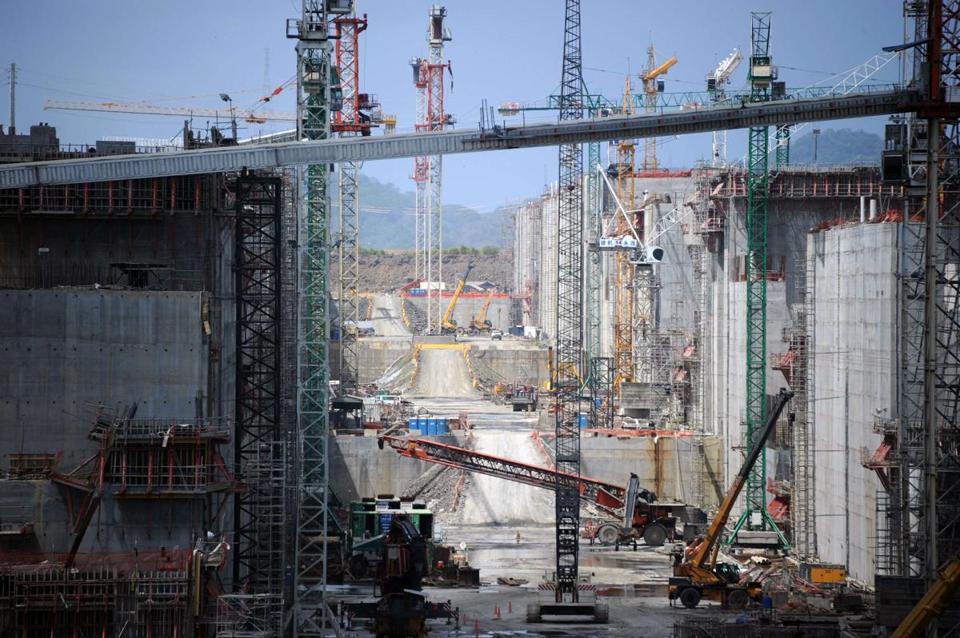This is a great article in CNBC about the impact that the expanded Panama Canal will have on small business that capitalize on it potential for increased world trade.
About 16 percent of US manufacturers are looking to establish new operations in Latin America: Bank of America Merrill Lynch.
Here is the commentary by Doug Davidson, north/central commercial banking market executive of Bank of America Merrill Lynch; and Odalis Martinez, Miami/Fort Lauderdale small-business banking manager.
The Panama Canal expansion is a massive infrastructure project, with major implications for small businesses.
New growth opportunities for U.S.-based businesses have already nearly tripled overseas. More than half (54 percent) of U.S. CFOs already do business or have plans to do business globally, according to the Bank of America Merrill Lynch 2015 CFO Outlook.
This makes the final stretch of the $5.3 billion Panama Canal expansion arguably the most significant economic development since the canal opened a century ago.
The re engineered canal, a project scheduled to be completed in 2016, will accommodate ships that are nearly three times larger than currently allowed. It will create an East Coast port system that will rival that of the West Coast. The subsequent developments in international trade will affect many small- and middle-market companies—whether they are ready or not—and across a host of industries, including transportation, professional services and manufacturing.
In southern ports like Miami, business owners are already preparing for the sea change. Now is the time for small- to mid-sized businesses to shift their strategies and ramp up operations to try and get a piece of the action before their competitors do.
Municipalities and other government entities are making upgrades to support the expanded Panama Canal, from dredging ports like PortMiami to accommodate the massive ships to adding capacity for the railway and ground transport systems that move goods to their next destination.
The Panama Canal expansion is one reason small-business owners in Miami are confident about their growth prospects. In a fall 2014 Bank of America Merrill Lynch survey, 75 percent anticipated their business will grow in the next five years.
Small- and middle-market business owners need to ask themselves the following:
- Is existing equipment and products providing the fastest service and highest quality?
- Is there a need to invest in commercial real estate to build additional warehouses and other facilities to store additional products for trade?
- Will the current business technology be ready to keep up with the influx of trade coming in and out of local ports?
- Will it be able to respond more efficiently and in real time to an increase in consumer requests?
Building a truly ‘American’ business
Scaling up and investing in new talent and equipment in preparation of the Panama Canal expansion is an opportunity to take a domestic business global—in particular, to Latin America.
According to the Bank of America Merrill Lynch 2015 CFO Outlook, about 16 percent of manufacturers are looking to establish new operations in Latin America, compared to 15 percent considering Asia and 14 percent considering Europe. In fact, companies with headquarters in Latin America that want to do business in the U.S. often establish operations in Florida, particularly Miami. As the fastest-growing U.S. business and consumer market in the South, Florida’s ports will be seen as gateways to both Latin American and Chinese markets.
Entering new markets and ramping up production could result in the need for new business partners. In light of the skilled labor shortage in the U.S., small- and middle-market businesses should tap existing networks, both domestically and internationally, to get introduced to organizations and partners that support new business, especially in a new geographic area. Working with skilled employees who are knowledgeable about the new market will give the company entering it the right understanding of their new foreign counterparts and consumers.
Business owners must become aware of what is happening and make sure that their business strategies reflect these new realities. If they do not, their competitors surely will.
